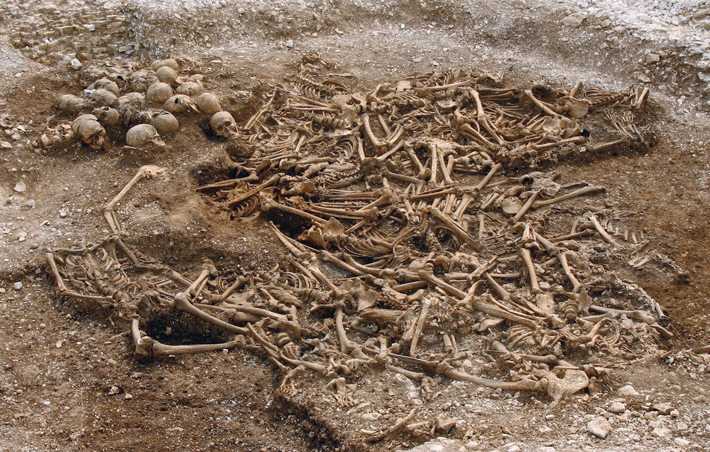
(Dorset County Council/Oxford Archaeology)
Viking mass grave, England
The largest-ever study of Viking DNA has revealed a wealth of information, offering new insights into the Vikings’ genetic diversity and travel habits. The ambitious research analyzed DNA taken from 442 skeletons discovered at more than 80 Viking sites across northern Europe and Greenland. The genomes were then compared with a genetic database of thousands of present-day individuals to try to ascertain who the Vikings really were and where they ventured. One of the project’s primary objectives was to better understand the Viking diaspora, says University of California, Berkeley, geneticist Rasmus Nielsen.
It turns out that the roving bands of raiders and traders, traditionally thought to have come only from Norway, Denmark, and Sweden, were far more genetically diverse than expected. According to Eske Willerslev of the University of Copenhagen, one of the most unexpected results was that the Viking Age of exploration may have actually been driven by outsiders. The researchers found that just prior to the Viking Age and during its height, between A.D. 800 and 1050, genes flowed into Scandinavia from people arriving there from eastern and southern Europe, and even from western Asia.
Read the rest of this article...